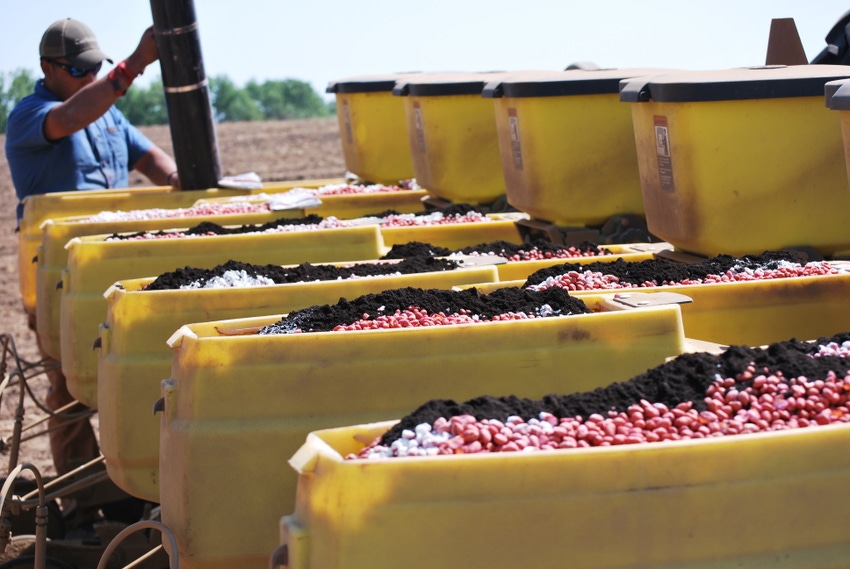
Hitting homerun yields is important to successful peanut production, but it’s only part of the profitability equation. Modern peanut farms are organized, long-term, sustainable operations with many moving parts, and precise strategies lead to top efficiency. And that’s something to talk about.
The Farm Press Peanut Efficiency Award honors growers who produce the highest yields by using inputs wisely and effectively. The awards are presented based on the producer’s entire farming operation and not on individual farms or small plots.
A second major component of the Peanut Efficiency Award is education. Southeast Farm Press, Delta Farm Press and Southwest Farm Press support the education element by publishing articles throughout the year focusing on peanut production efficiency.
Awards are presented to growers from the Lower Southeast, including Alabama, Georgia, Florida, Mississippi and Arkansas; the Upper Southeast, including Virginia, North Carolina and South Carolina; and the Southwest, including Texas, Oklahoma and New Mexico.
“While achieving consistently high yields and grades is important, it’s only part of the equation to maximizing profits. The elements of production cost and price are equally important factors in our evaluation of nominees. Marketing expertise definitely has given an edge to recent winners of the award,” says Marshall Lamb, research director for the USDA National Peanut Research Laboratory and lead advisory for the PEA program.
What efficient peanut farmers do
What constitutes a winning yield has changed over the life of the peanut awards program. A decade ago, a competitive irrigated yield would average two tons per acre. But with the improved and impressive varieties coming out of breeding programs now, the competitive bar has moved up to a 5,000-pound to 3-ton-per-acre average.
But other than strong yields, efficient peanut farmers share other things in common, too, or ways to make their crop as profitable as possible, Lamb said.
Based on studying past Peanut Efficiency Award nomination forms, which are kept confidential and not shared with the public, Lamb has pinpointed these common traits or approaches to efficient, sustainable peanut production:
Irrigation - In an average year, irrigation can add 800 to 1,000 pounds per acre. In a drought, it can mean the difference between having a crop or not. It is just one of those things that pays off and reduces financial risk on the grower, and most of the past award winners use some sort of scheduling technology.
Improved, precision practices – Efficient growers use reduced tillage or strip till to cut labor and fuel costs. In recent years, winners and good nominees have used GPS to plant and dig peanuts to reduce pod loss, and used variable rate fertility based off soil samples.
Don’t skimp inputs – Efficient growers don’t skimp on fungicide, herbicide or insecticide programs, Lamb said, and they have a good crop consultant or county Extension agent to advise them when and where to use that crop protectant.
Good marketers – Good marketers will contract some of their crop at planting or early in the season and then evaluate as the growing season progress, putting peanuts in the loan to take them out later. They essentially maintain control of some of their production.
Strict crop rotation – Good farmers know it, but it really can’t be said enough: One of the most common themes of all efficient growers is they have really good crop rotation cycle, with a minimum of two years out of peanuts but usually three to four years out if they can swing it.
Control fixed costs – Their equipment portfolios are well balanced. They do purchase new equipment but they spread the purchases out so they have some equipment that is fully depreciated and fully paid for, while at the same time they have some equipment that is fairly new. This is one of the more difficult things to plan. With your capital asset replacements, you have to have a plan and stick to it, Lamb said.
The Peanut Efficiency Award nomination forms can be submitted directly to the National Peanut Research Laboratory in Dawson, Ga., or to local county Extension agents, peanut specialists or economists.
The deadline for all nominations is April 15, 2017.
Growers or those wishing to nominate a grower can access the nomination form online.
To receive a hard copy of the form, call Farm Press headquarters at 662-624-8503.
Since the program’s beginning in 2000, the Peanut Efficiency Award has honored 51 deserving growers or farms from across the U.S. Peanut Belt. The awards program began with the Southern Peanut Growers Conference in conjunction with the Southern Peanut Farmers Federation and the two have grown together over the years.
Winners of the 2017 awards will receive an expense-paid trip for two to the Southern Peanut Growers Conference in July at the SanDestin Golf and Beach Resort. The winners are featured in special Peanut Efficiency issues of Southeast Farm Press, Southwest Farm Press and Delta Farm Press.
About the Author(s)
You May Also Like






